
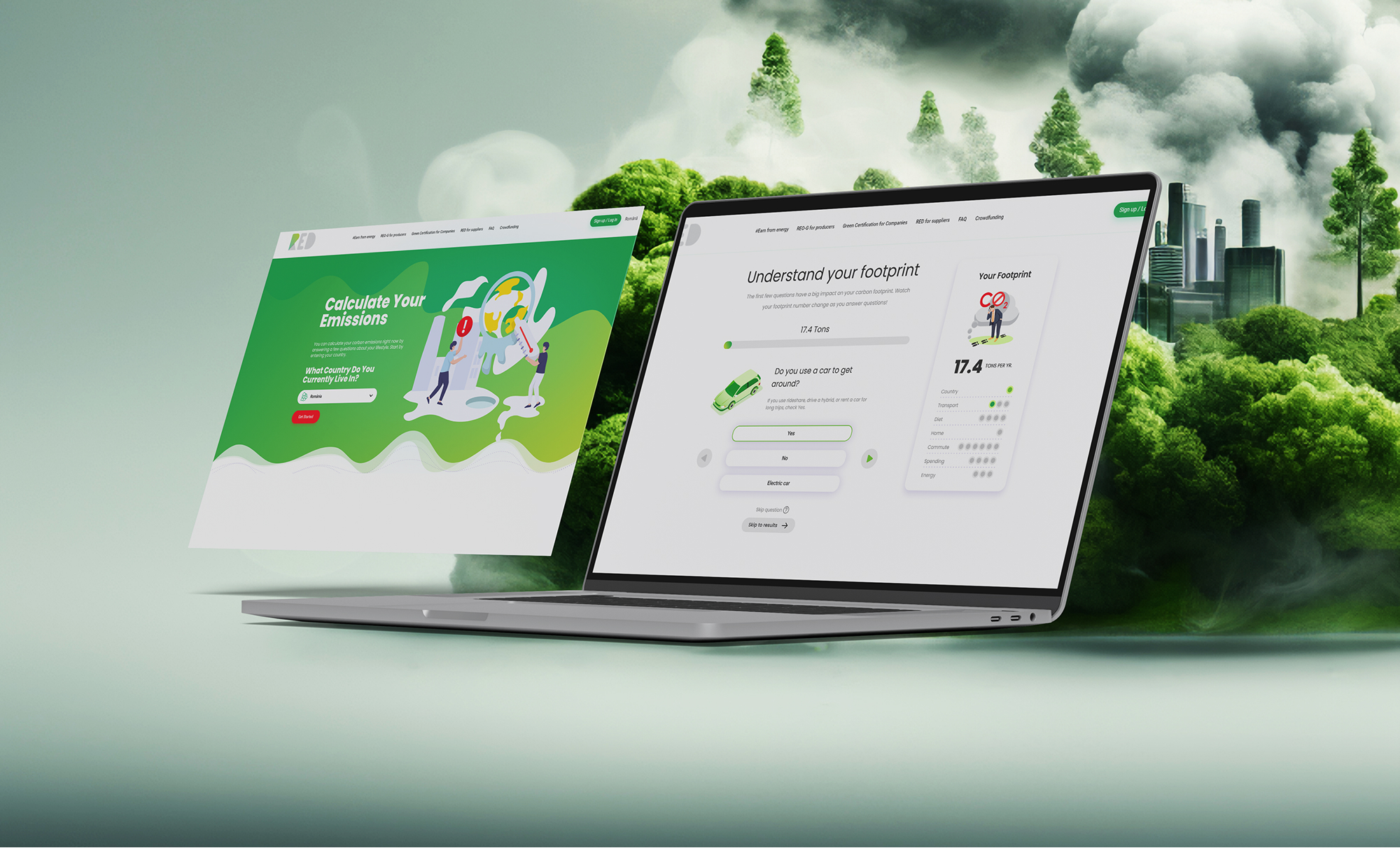
Carbon Footprint Calculator
UX Case Study

Project Overview
The Carbon Footprint Calculator is a web-based tool designed to help users understand and reduce their environmental impact by calculating their annual CO₂ emissions. The goal of the project was to create an intuitive, engaging, and educational user experience that encourages users to take actionable steps toward reducing their carbon footprint.
The problem
Many individuals are unaware of their carbon footprint and how their daily habits contribute to climate change. Existing carbon calculators were often complex, overwhelming, or lacked visual appeal, leading to low user engagement. The challenge was to create a tool that simplifies the process of calculating carbon emissions while educating users in an engaging way.
Responsibilities
As the lead UI/UX designer, I was responsible for:
- Research to understand the target audience.
- Designing the user interface and user experience.
- Creating wireframes, prototypes, and final designs.
- Collaborating with developers to ensure seamless implementation.
- Iterating based on feedback.
The goal
The primary goal of this project was to design a user-friendly carbon footprint calculator that simplifies complex data, engages users through interactive and visual elements, and educates them about their environmental impact. The tool aims to inspire users to take actionable steps, such as reducing their emissions or offsetting their carbon footprint, by providing clear, personalized insights and comparisons to global averages. Ultimately, the goal was to create a tool that not only calculates emissions but also motivates users to adopt more sustainable lifestyles.
- Simplifies Complex Data: Break down the carbon footprint calculation process into easy-to-understand steps.
- Engages Users: Use visual feedback and interactive elements to keep users motivated throughout the process.
- Educates and Inspires Action: Provide users with clear, actionable insights and tips to reduce their environmental impact.
- Encourages Offsetting: Offer users the option to offset their emissions through partnerships with environmental organizations.
User Research
Target Audience
Primary Users: Environmentally conscious individuals, students, and professionals looking to understand their environmental impact.
Secondary Users: Organizations and educators promoting sustainability.
- Existing carbon footprint calculators were overly complex and difficult to navigate, making the process cumbersome.
- Excessive data and information made it difficult to understand results and take actionable steps.
- Many tools were not optimized for mobile devices, creating accessibility issues for smartphone users.
- The absence of gamification elements made the experience feel less rewarding and engaging.
- The process of calculating a carbon footprint was too lengthy, discouraging engagement.
- Results were often presented in a way that was hard to understand, reducing the tool’s effectiveness.
- There was no option to offset emissions directly through the tool, limiting its functionality.
- The tools were not beginner-friendly, making them inaccessible to those with limited environmental knowledge.
- The tools did not highlight potential cost savings from reducing carbon footprints, missing an opportunity to motivate users.
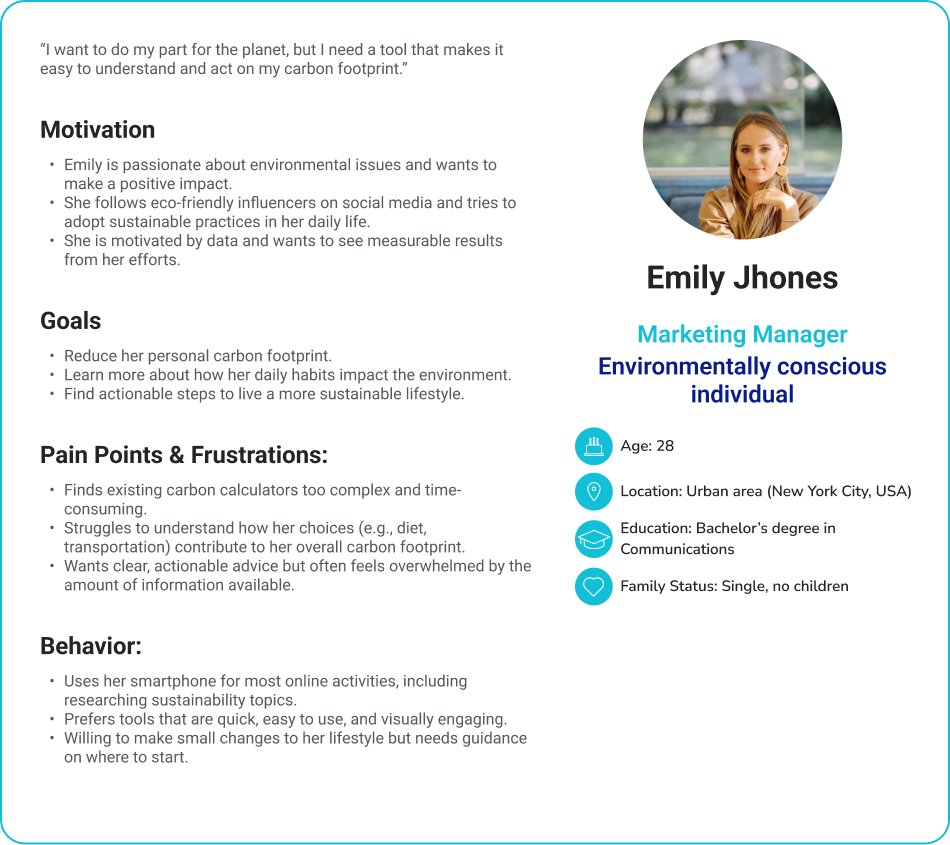

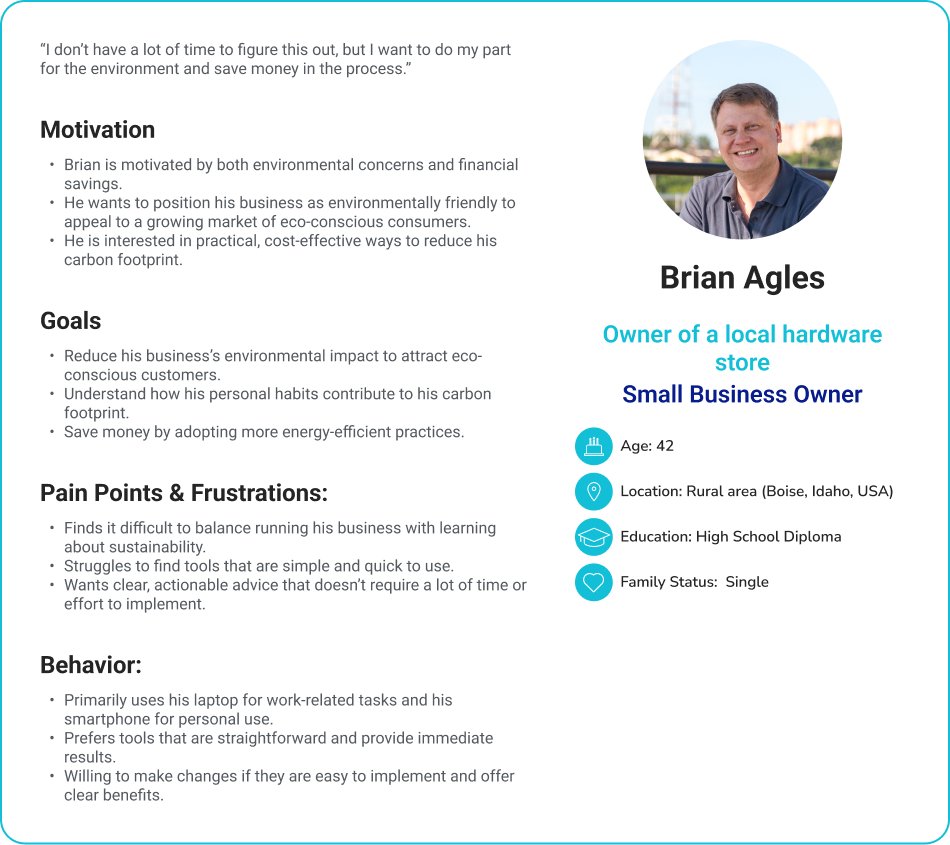
The design process
The design process for the Carbon Footprint Calculator started with research to identify pain points like complexity and low engagement. Wireframes and prototypes were created, focusing on a step-by-step questionnaire and real-time feedback.
Designed low-fidelity wireframes to map out the user flow.

Visual Design
At this stage, I focused on creating a clean, intuitive visual design that enhances usability and aligns with the Carbon Footprint Calculator’s mission of promoting sustainability. Earthy green tones symbolize environmental responsibility, while neutral accents convey balance and simplicity. Clean typography and clear icons improve readability and navigation, ensuring a seamless and engaging user experience.

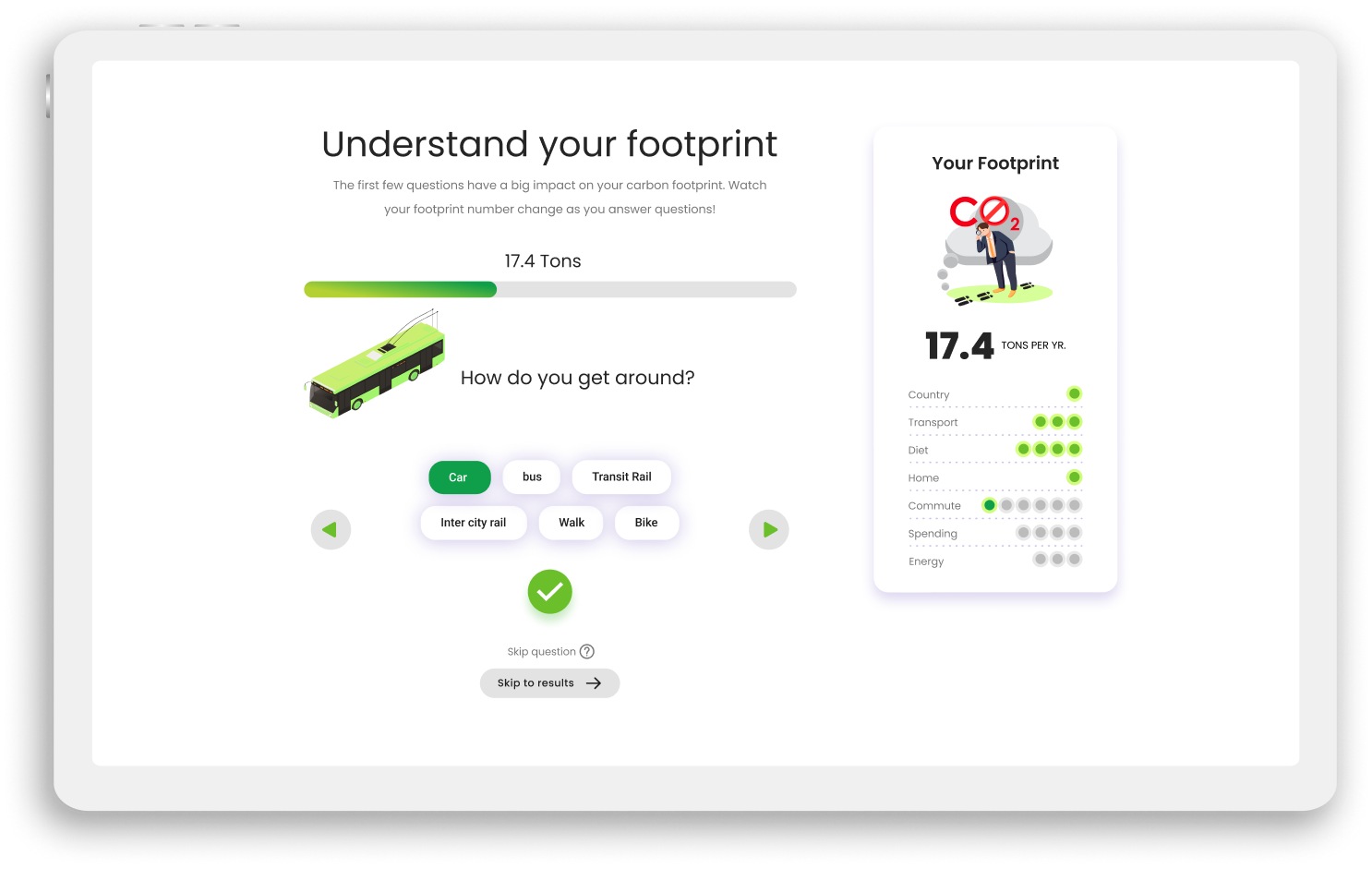


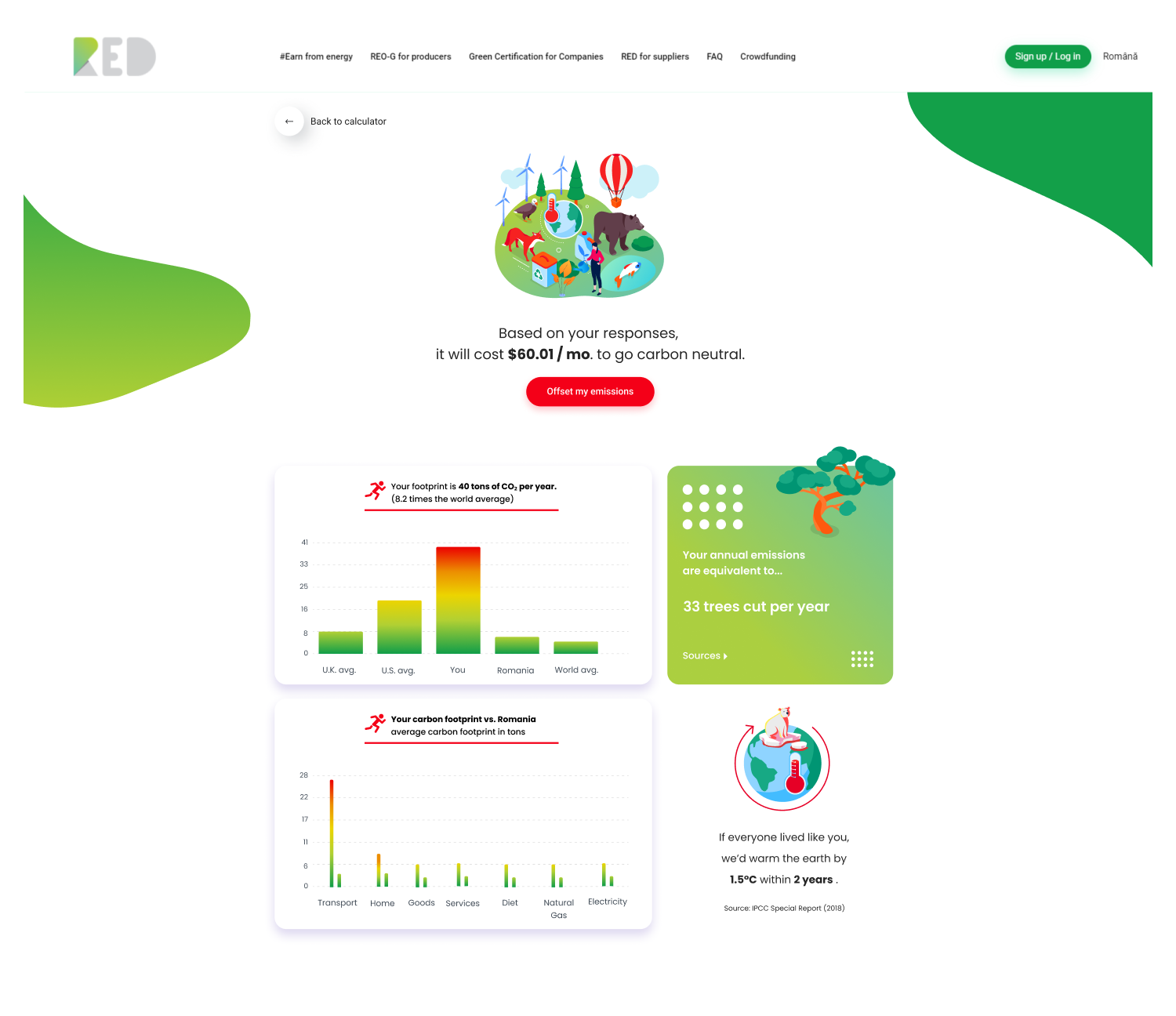
Outcome
Expected Outcomes & Impact
The Carbon Footprint Calculator successfully addressed user pain points by providing a simple, engaging, and educational tool for calculating carbon emissions. Key achievements included increase in user engagement, positive feedback on the tool’s usability and visual appeal. The tool not only educates users about their environmental impact but also inspires them to take actionable steps toward sustainability.
Key Takeaways
Simplifying complex processes into step-by-step questions improved user engagement and completion rates. Real-time visual feedback, like the dynamic carbon footprint meter, kept users motivated and informed. Personalizing results and recommendations increased the tool’s relevance and effectiveness. Iterative design and usability testing were crucial for refining the user experience and addressing pain points.
Next steps
Test the tool with a broader audience to identify additional pain points and areas for improvement. Continuously refine the visual design based on user feedback to ensure it remains modern, intuitive, and aligned with sustainability themes.
